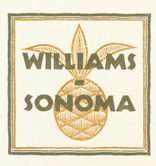 The fruits of the Prickly Pear in Italy are known as Fichi d'India (India Pears), marketed in America with the friendlier, less dangerous name of Cactus Pears. The plant was first introduced into Europe after the discovery of the Americas by Columbus. The fruits were named fichio d’India (Indian fig) because when Christopher Columbus arrived in the new continent and saw prickly pears he thought he was in India. These colorful fruits make a sweet snack or a margarita mixer. Unlike Mexico and other countries, Italy doesn't use the cactus paddles, but simply loves this pear shaped fruit. Intensive plantations across Sicily and the southern mainland make it only second to Mexico in cactus fruit production.  Large, crunchy seeds Large, crunchy seeds In reality, the word “prickly” lessons the dangerous aspect of the spines of this fruit. But it's not the obvious large spines of this cactus that are the problem, the real danger is from the tiny, nearly invisible hair-like spines that completely cover the skin of the fruit that you have to watch out for. If you touch them with your bare hands, you won't be able to wash them off... microscopic hooks dig into your skin causing burning pain. What do they taste like? Many say that Fichi d'India are sweet but not too sweet. Some describe the flavor like a fig crossed with a plum. They are also very seedy, with big, hard seeds. Some like to feel the crunch of the seeds between their teeth, while others eat them as they do pomegranates, swallowing seeds along with the gelatinous flesh (think, "fiber"). In southern Italy (especially Sicily) people love eating them fresh. You will often find them pre-skinned and ready to eat in market displays. The taste varies with the color--white, orange and red. Some say that the red ones have more flavor than the other colors. One interesting tradition is winery owners giving the fruit to their grape-pickers for breakfast to prevent them from eating grapes during the harvesting. This tradition is still kept today. You'll find the best ones during its harvest time in Sicily, from October to December. There is also a Sagra del FicoIndia in the town of Roccapalumba in Palermo Province held usually in the second week of October. During the feast, the town’s streets will be alive with workshops about how to peel and eat the tuna (Sicilian word for the fruit) of the cactus, how to prepare it for consumption, and there will be opportunities to taste products and dishes made from the plant–everything from honey to liquor to a recipe called scuzzulata. More than 30,000 people attend.  Culinary Use Besides being eaten fresh, Fichi d'India can be used in salads, vinaigrette and made into granita, jams or honey. They are also used in Sicilian cakes, such as Buccellato, which is very common at Christmas time. You can drink juice from the fichi d'India, but it really needs some lemon added for additional acid. In fact, it is often used in commercial drinks as a flavoring.  Many make a home brew--Liquore al fico d’india--from the fruit in a similar manner as one would make limoncello, placing the cut up fruit in jars of alcohol with a sugar-syrup and fermenting in a dark place. The resulting liquor is best served very cold. The fruit is high in vitamin C, antioxidants. calcium and phosphorus. --Jerry Finzi This video shows how to skin and harvest a Fichi d'India fresh from the cactus plant--without getting hurt. Here are two Nonnas showing the sensible method of skinning the Fichi d'India by soaking them first in a bucket of water.
|
Archives
July 2023
Categories
All
|










